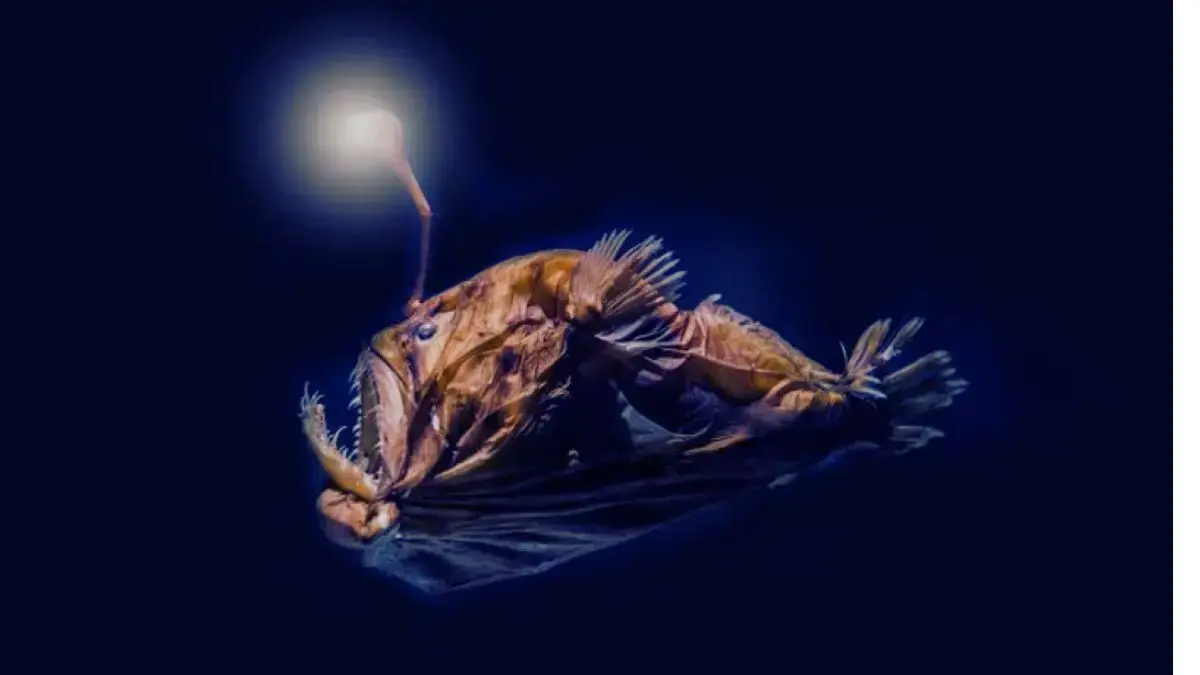A unique sighting of an abyssal anglerfish was observed at the surface near Tenerife, marking the first time a mature, live specimen has been spotted at an extreme depth. Adapted to the pressure of the depths, this creature, which is typically found at depths ranging from 200 to 2000 meters, exhibited abnormal behavior, possibly due to a predator or a disease. Unfortunately, it did not survive several hours after the sighting, raising questions about its movement to the surface.
The essence of the information
- Unique appearance of an abyssal anglerfish observed at the surface near Tenerife.
- First sighting of a mature anglerfish at this depth.
- Abnormal behavior possibly related to a predator or a disease.
- Scientific significance of this discovery for a better understanding of abyssal species.
Unique sighting of an abyssal anglerfish
A fascinating discovery took place off the coast of Tenerife: an abyssal anglerfish, a true monster from the depths, was observed at the surface. This rare event raises many questions and captivates the scientific community, as it is not often that these creatures, highly adapted to the most hostile environments on our planet, are seen.
First sighting of a live mature anglerfish
This is the first time a live mature anglerfish has been seen at such an unusual depth. Typically, these marine species thrive at extreme depths, between 200 and 2000 meters, where the pressure is so high that only a few species can adapt. The discovery of this specimen at the surface thus represents an unprecedented event.
Adaptations to extreme pressure
Abyssal anglerfish are equipped with unique physiological traits that allow them to survive in the depths. These creatures, with their gelatinous bodies, are designed to withstand pressures that would crush most other life forms. Their adaptation to these extreme conditions makes their appearance at the surface particularly surprising.
Abnormal behavior and hypotheses
The observed behavior of the anglerfish was abnormal, prompting speculation about the reasons for its presence at the surface. Researchers propose several hypotheses, including the influence of a predator, disruption caused by ocean currents, or the manifestation of a disease affecting the specimen. This situation has led to increased vigilance among scientists in order to understand the possible causes of this anomaly.
A vulnerable specimen
Sadly, the specimen did not survive after several hours of being observed at the surface due to depressurization. This loss underscores the importance of protecting these creatures and the vulnerable marine environments in which they reside. The exposure to surface conditions must have caused tremendous stress on the body of the anglerfish, making survival impossible.
Bioluminescence and hunting techniques
Abyssal anglerfish use bioluminescence to attract their prey in the darkness of the depths. This fascinating adaptation allows them to hunt effectively in an environment where natural light is virtually absent. Understanding how and why this anglerfish was at the surface could provide crucial information about its feeding and reproductive behavior.
Is Carbon Really Bad for the Environment While Being the Chemical Element That Makes Life Possible?
Scientific significance of the sighting
This sighting has considerable scientific significance. It provides a unique opportunity to study abyssal species and deepen our understanding of deep marine ecosystems. The data collected from the specimen that was taken to the museum will be valuable for future studies and will contribute to research on deep-sea biodiversity and the impact of environmental changes.
Future prospects
As science continues to explore the depths of our oceans, the discovery of an abyssal anglerfish at the surface raises important questions and opens up new exploration possibilities. Researchers must not only analyze the biological characteristics of this type of organism but also the potential impact of human activities on their natural habitat. This event could mark the beginning of a new era in the study of abyssal ecosystems.

